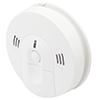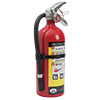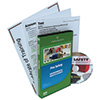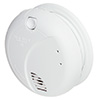Fire Safety Guidelines
Protect your property and safeguard staff, residents, and guests by following fire safety guidelines and recommendations. Everyone onsite should be made aware of how to avoid fire hazards and how to respond in the event of fire, including evacuation procedures.

Fire Safety Equipment
Basic fire safety equipment on your property can make a big difference should an emergency occur.
- Smoke alarms are essential to fire safety, giving you precious time to evacuate the building and call for help. Smoke alarms should be installed outside every sleeping area and checked monthly to be sure they work. Learn More About Smoke Alarms
- Carbon monoxide (CO) detectors should be installed in a central location and outside each sleeping area. Carbon monoxide is a tasteless, odorless, and invisible gas created when fuels such as gasoline, wood, coal, natural gas, propane, etc. do not fully burn. Carbon monoxide fumes are toxic and can be fatal. Learn More About CO Alarms and Related Legislation
- Fire extinguishers, if used properly, are useful for putting out a small fire or containing it until the fire department arrives. Learn More About Fire Extinguishers
Emergency & Fire Safety Signs
Properties need to have proper emergency and safety signage. Post maps or diagrams with arrows showing exit routes and fire extinguishers.
OSHA requires fire extinguishers to be identified, and suggests installing a sign or other identification above the fire extinguisher. All signs should be unobstructed, easy to see, and exits should be clearly marked and well lit. Other fire safety signs include sprinkler controls, fire door, hazardous material warnings, no smoking signs, and more.
Fire Safety Training
Employers need to have an emergency plan in place and train employees on what to do in a fire emergency. If workers are expected to use fire extinguishers, they need to have proper access and training. Staff, residents, and guests need to know evacuation procedures and routes, including stairways and meeting places. Evacuations that are chaotic and disorganized can result in panic, injury, and property damage. OSHA recommends clearly communicating to employees who will be in charge during an emergency to minimize confusion.
Fire Hazards to Avoid
Many fires are preventable. Protect against fire at your property by eliminating fire hazards and educating your staff, residents, and guests on fire prevention.
Common fire hazards include:
- Improper storage of hazardous materials – check label for storage recommendations and learn more about properly storing hazardous materials
- Damaged or dusty heating units – perform regular maintenance on HVAC equipment to reduce the risk of fire
- Smoking – provide proper receptacles in outdoor smoking areas
- Unattended stove or candles – keep clothing, pot holders, paper towels, and other loose items away from open flames
- Lighting and electrical – don't overload outlets and perform an annual check of electrical systems and wiring. Ensure you have the right outlets for your property
- Dryers – be sure dryers are properly vented and lint traps are cleaned after every use
- Christmas trees and holiday lights – be sure decorative lighting is not frayed, damaged, or left on overnight
Shop Fire Safety Products
NOTE: This information is a summary interpretation and was prepared as general reference material only. This summary is not authoritative as laws can be amended over time. For specific compliance requirements and updates, please refer to the actual code language and the statute or legal counsel.






